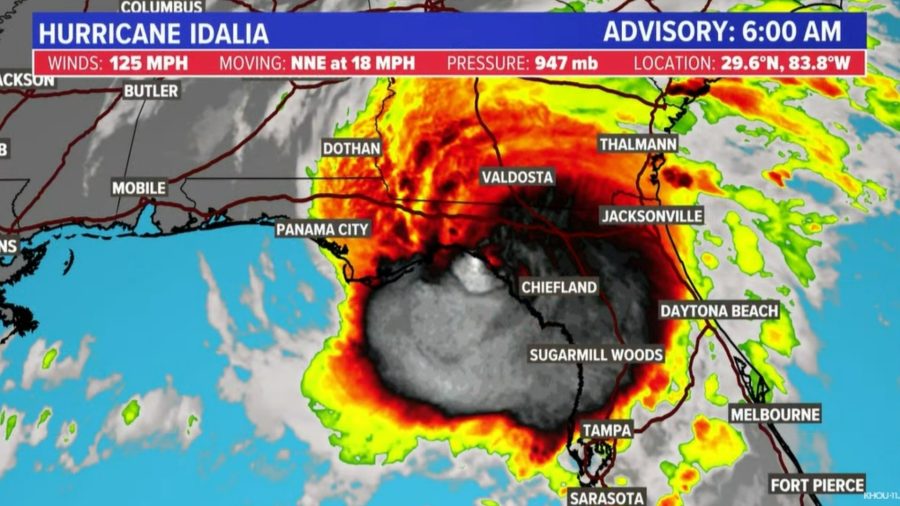
Hurricanes: Nature’s Powerful and Destructive Cyclones
Hurricanes, also known as cyclones or typhoons in different parts of the world, are natural phenomena that captivate our attention due to their immense power and potential for destruction. These swirling storms, fueled by warm ocean waters and atmospheric conditions, can cause widespread devastation to coastal areas, leaving behind a trail of destruction that impacts communities, infrastructure, and ecosystems. In this comprehensive guide, we delve into the science behind hurricanes, highlight some of the most famous storms in history, and provide essential safety tips to help you prepare for these formidable events.
Understanding Hurricanes: Nature’s Fury Unleashed
A hurricane is a large, organized system of clouds and thunderstorms with a defined circulation pattern, originating over warm tropical or subtropical ocean waters. These storms are categorized based on their wind speeds, with the Saffir-Simpson Hurricane Wind Scale being the commonly used classification system. The scale ranges from Category 1 (weakest) to Category 5 (strongest), taking into account potential damage and storm surge.
Formation and Structure
Hurricanes are born when warm ocean water evaporates and rises, creating an area of low pressure near the surface. As the air rises, it cools and condenses into clouds, releasing latent heat and driving the storm’s rotation. The eye of a hurricane is a central, calm area surrounded by the eyewall, where the strongest winds and heaviest rainfall occur.
Impact and Devastation
The impact of a hurricane extends beyond its fierce winds. Storm surge, a dome of water pushed ashore by the winds, can cause massive flooding in coastal areas. Heavy rainfall can lead to flash floods and mudslides, while the strong winds themselves can topple trees, power lines, and buildings. The combined effects of wind, rain, and flooding can result in long-lasting disruptions to communities and economies.
Famous Hurricanes Through History
Several hurricanes have etched their mark in history due to their unprecedented intensity and the scale of their destruction. Here are some notable examples:
1. The Great Galveston Hurricane (1900)
One of the deadliest natural disasters in U.S. history, this Category 4 hurricane struck Galveston, Texas, claiming an estimated 8,000 lives. The lack of advanced warning systems at the time contributed to the staggering loss of life.
2. Hurricane Katrina (2005)
Katrina, a Category 5 hurricane, devastated New Orleans and the Gulf Coast, leading to catastrophic flooding and the displacement of hundreds of thousands of residents. Its aftermath highlighted the importance of effective disaster response and preparedness.
3. Hurricane Andrew (1992)
Andrew’s Category 5 winds wreaked havoc in South Florida, leaving a path of destruction that prompted significant improvements in building codes and disaster readiness.
Staying Safe: Hurricane Preparedness and Safety Tips
Being well-prepared is key to mitigating the impact of a hurricane. Here are essential safety tips to consider:
1. Create an Emergency Kit
Assemble a kit with essentials such as non-perishable food, water, medications, flashlights, batteries, important documents, and a first aid kit.
2. Develop a Family Communication Plan
Outline how you will stay in touch with loved ones during a hurricane. Designate a meeting place and establish contact methods.
3. Know Your Evacuation Routes
Familiarize yourself with the evacuation routes in your area. Follow official instructions if authorities recommend evacuating.
4. Reinforce Your Home
Consider strengthening your home’s windows, doors, and roof to better withstand high winds. Trim trees and secure outdoor objects that could become projectiles.
5. Stay Informed
Monitor weather forecasts and official announcements from local authorities. Having a battery-powered weather radio can be invaluable.
6. Evacuate When Advised
If authorities issue evacuation orders, follow them promptly. Your safety is the top priority.
Conclusion
Hurricanes are formidable forces of nature that demand respect and careful preparation. By understanding their formation, effects, and history, and by following safety guidelines, you can increase your resilience in the face of these powerful storms. Stay informed, stay safe, and be ready to weather the storm.






